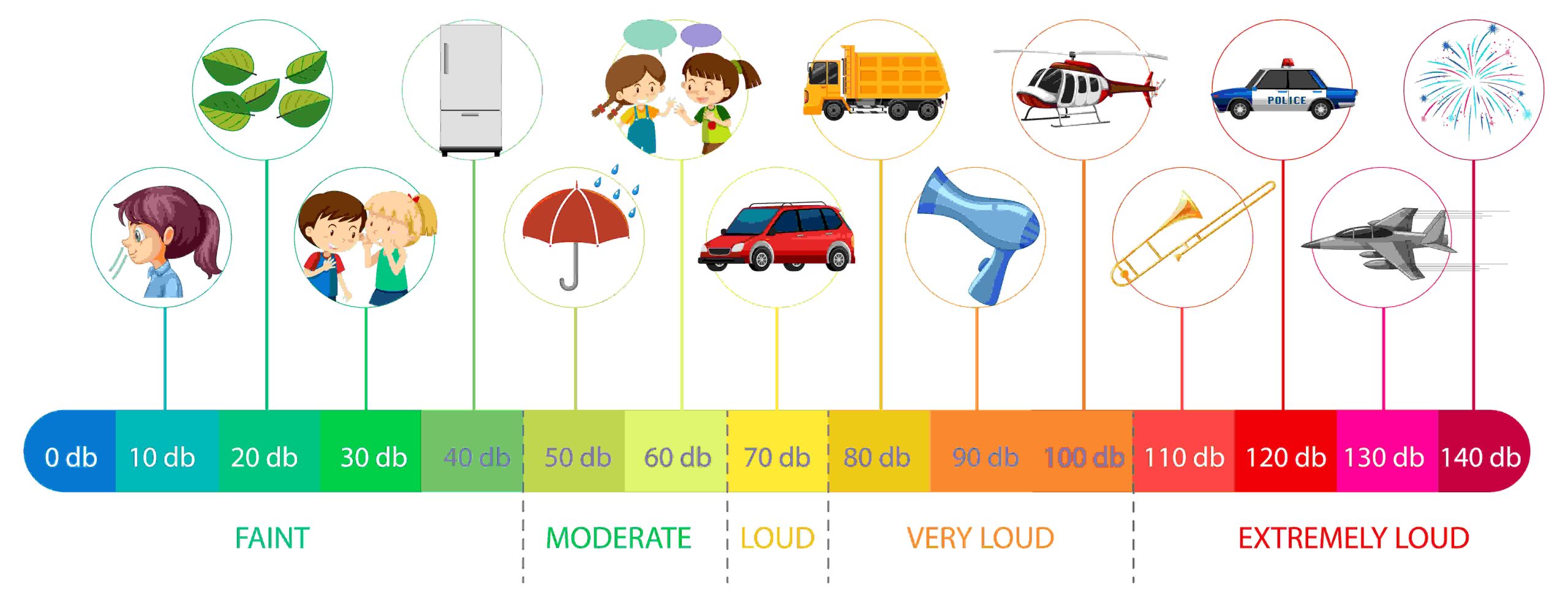In line with the information provided by the Encyclopaedia Britannica, a Decibel (dB) serves as the measurement unit for indicating the proportion between two physical quantities, commonly referring to acoustic or electric power, or to evaluate the comparative volume of sounds.
But for those who are not well-versed in the subject, how can we explain this in simpler terms? What does a decibel actually represent? Can we compare it to the sound of a kettle boiling or footsteps? And when we talk about the upper limit of 85 decibels, what does that translate to in tangible terms? Is it akin to the noise of a fighter jet passing by or the clamour of a jackhammer? In this introductory blog post, we aim to demystify this unit of measurement and provide a clear understanding of its real-world implications and the reasons why assessing its impact on the environment is of utmost importance.
What Was the Process of Creating the Unit?
The contribution of Alexander Graham Bell is significant in the naming of the unit ‘Decibel.’ Bell Telephone Laboratories is responsible for its creation. When the telephone was invented, engineers required a method of measuring sound levels to evaluate transmission quality. They introduced the ‘bel’ as the unit, with a decibel being one-tenth of a bel. It is worth noting that the human ear can distinguish A one-decibel difference in loudness, making it the smallest detectable variation.
Due to the limitations of human hearing in perceiving all sounds and frequencies, the evaluation of what we hear and its perceived loudness is adjusted using the A-weighted scale, commonly referred to as dBA. This scale is specifically designed to align with a child’s hearing range.
Can You Explain the Inner Workings of the Human Ear?
Hearing is a highly intricate process that involves the conversion of sound waves into electrical signals. These signals are then sent to the brain through the auditory nerve, where they are deciphered and perceived as sound.
Are You Prepared for the Scientific Portion? Let’s Begin…
Sound can be described as a change in pressure that moves through air, fluid, or solid substances in the form of sound waves. These waves have different sizes and frequencies, which determine the pitch, tone, or frequency of the sound.
When it comes to the process of detecting and interpreting sound, what happens in our ears? Sound waves travel through the ear canal, causing the eardrum to vibrate. these vibrations are then transmitted to the middle ear, where three small bones called the malleus, incus, and stapes amplify them. Following this, the amplified sound vibrations are sent to the inner ear, which is also referred to as the cochlea. The cochlea, resembling a snail shape, is filled with fluid and contains around 40 thousand tiny sensory cells, also known as hair cells. As the vibrations reach the cochlea, the fluid inside moves and ripples, causing the hair cells to bend. This bending action generates an electrical signal, which is then carried by The auditory nerve to the auditory cortex in the brain. It is in the auditory cortex that this signal is transformed into the sound that we recognize and perceive.
When there is an impairment in hearing, it occurs due to the damage or destruction of the small hair cells in the cochlea. Generally, Hearing loss is permanent, hence it is crucial to safeguard your hearing and adopt necessary precautions when working in a loud setting. If you’re unsure about the noise levels in your workplace or need professional guidance on protecting your hearing, consulting with noise consultants London may be the key to ensuring your auditory health.
Sound Levels Can Be Perceived Differently by Individuals
The process of hearing is highly delicate, and although we are capable of detecting sounds ranging from faint whispers to loud gunshots, each individual’s hearing and interpretation of noise will differ. For instance, a teenager may consider the volume of music playing from their room speakers to be satisfactory, whereas parents often perceive the noise as excessive. This is why experts and acoustic engineers rely on a sound level meter to obtain acoustic measurements.

